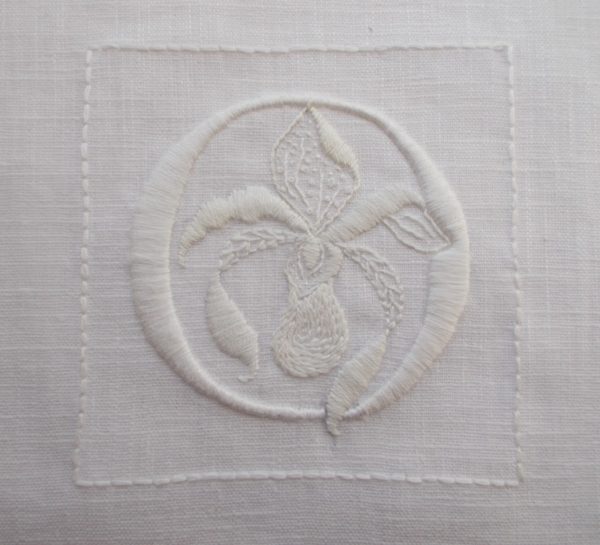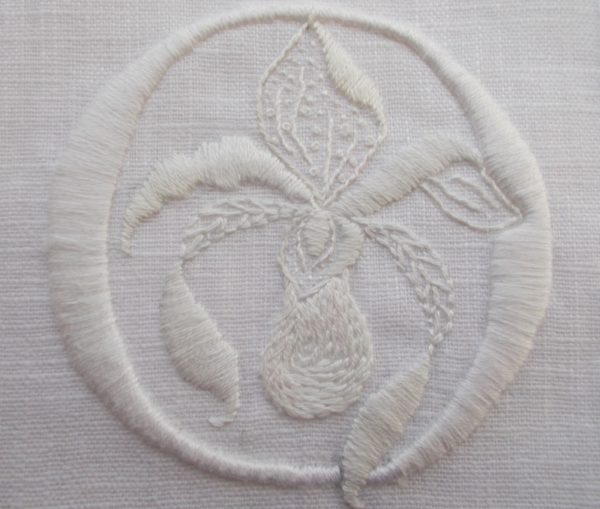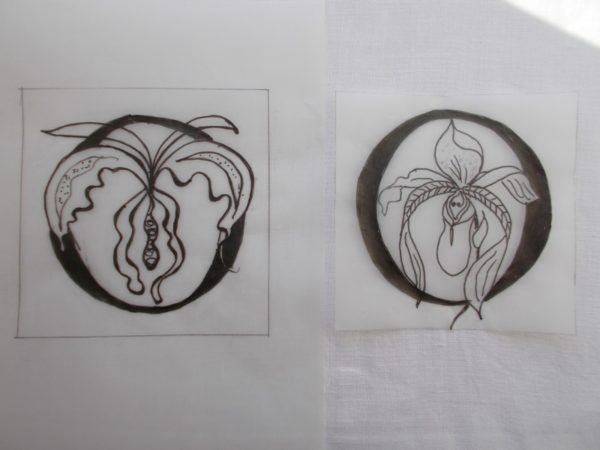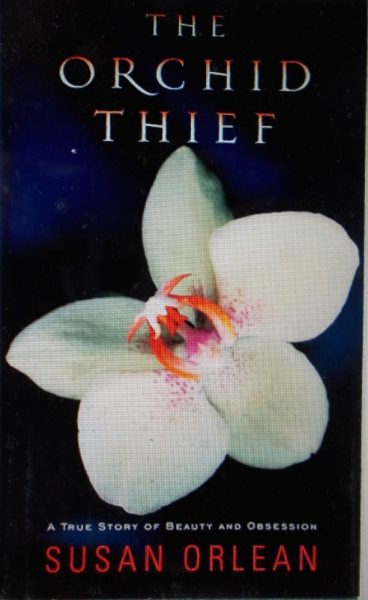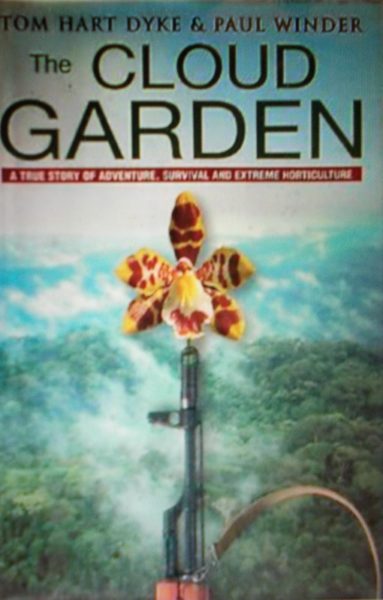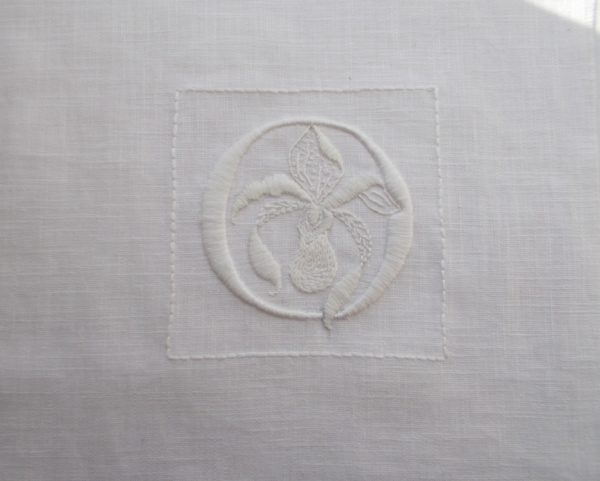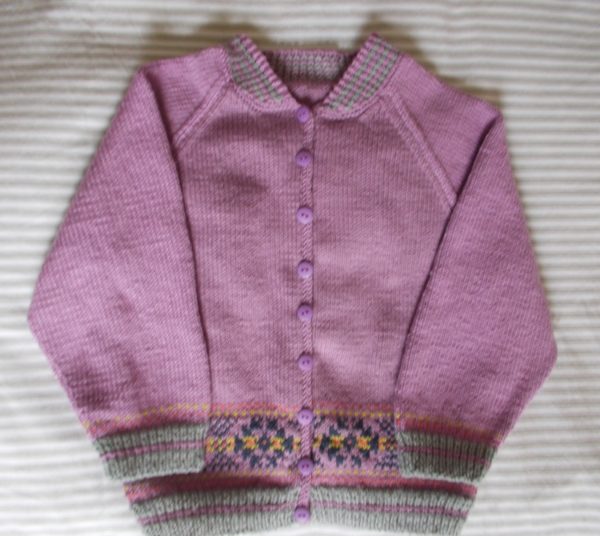
Baseball jacket in Baby Cashmerino (from Debbie Bliss Baby Cashmerino Bk 4)
Being confined to quarters has been a great plus on the embroidery front. I’ve finished a cushion for the last couple my husband married. As that event was two years into full retirement there will probably be no more weddings, so I threw myself into the embroidery for this one and had a really enjoyable time. I have now to make it into a cushion and will blog about it then. I also started out on whitework letter P but was stopped in my tracks by finding my stock of embroidery thread in the right shade of white was diminished to the point of invisibility. Sourcing a new supply hasn’t been easy.
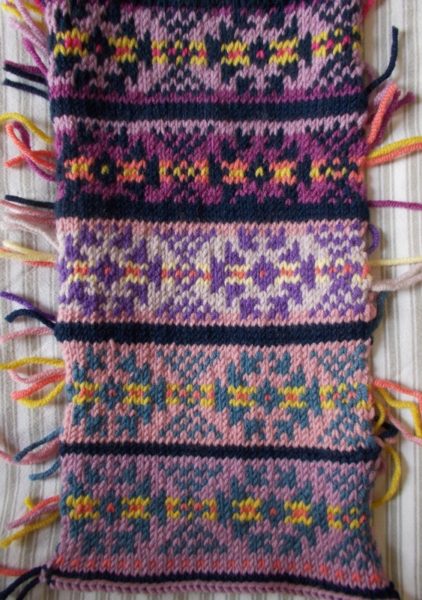
Fair Isle samples worked from a design in Mary Jane Mucklestone’s ‘ 200 Fair Isle Designs’
I use 4 different white threads. To me there are fine differences.
DMC B5200 = snow white = Anchor 01 (though the latter has a slight pearl sheen that I love)
DMC 3865 = winter white = Anchor 02 (though 3865 is more yellow)
DMC Blanc also = Anchor 02 (though Blanc is less yellow)
Anchor WHITE with no number is produced by and for the Indian market and seems a brighter white
Sometimes I mix up these whites on the same piece to give subtleties of shading, but more often for bigger pieces like cushions, I just use one shade. I admit to having favourites, though my faithfulness can shift – unfortunately more like transient affairs than serial monogamy!
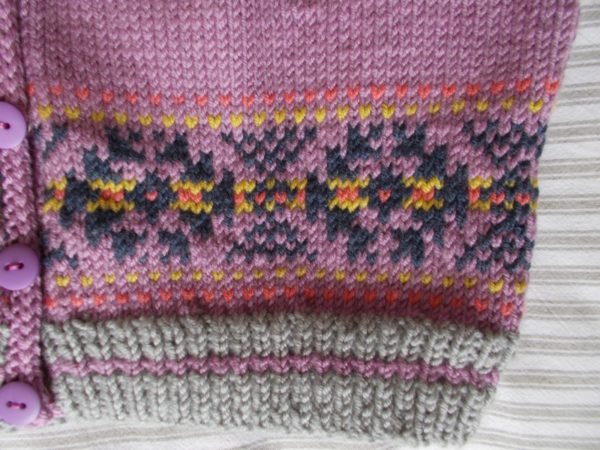
Detail: Baseball jacket in Baby Cashmerino (from Debbie Bliss Baby Cashmerino Bk 4)
Through a personal foible, I don’t like to pay online but prefer to ring up with an order. Right now, many of the larger firms have closed their phone lines and will only deal with online orders. I could get my husband to order but that’s selfish of me. After a bit of a wasted morning on April 1, I finally hit upon a phone answered very efficiently by Hobbycraft who took an order for 30 skeins of DMC Blanc @ 99p per skein, due to be delivered today (they had no stock in the other shades). Anchor 01 & 02 (83p per skein) I tracked down to Cross Stitch Workshop whose owner, Jane, rang me back twice after our initial phone calls found each of us busy elsewhere. It was from Jane that I learned that Anchor WHITE was a shade on the colour card available in India whose range is much reduced compared to that we’re used to in Europe. Online this white is highly available, though without any explanation of lack of the usual colour number. I had bought a box myself which is why I can compare shades. I suspect the bright white works well in Indian sunshine but for me it’s just a bit too sharp. I shall use it but I don’t love it. Jane and I had a lovely chat, she popped 20 skeins of each white in the post and they arrived this morning. I love these sewing and knitting women running efficient little businesses scattered across the UK. Since Debbie Bliss piled all her eggs into Lovecrafts (no phone orders and not at all good on embroidery threads which I think they’ve only just got into) I’ve sourced her Baby Cashmerino yarn from several of these independent sellers who are unfailingly helpful, informative and with a real understanding of their customers’ needs. Baby Cashmerino will soon dry up from these sources and then I shall have to use Lovecrafts or find a new yarn (and patterns – sob, sob.). If one good thing comes out of this crisis I hope it is an appreciation and flourishing of the small specialist suppliers who answer the phone, distribute gems of information and are generally willing to debate the problems of the world. Small is very beautiful.
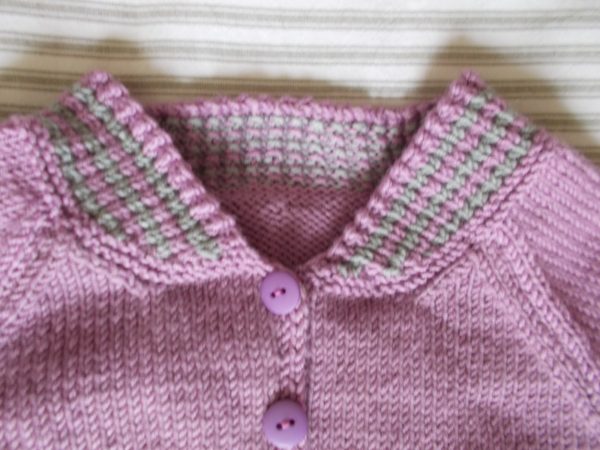
Detail of collar: Baseball jacket in Baby Cashmerino (from Debbie Bliss Baby Cashmerino Bk 4)
Meanwhile here is my fourth Debbie Bliss Baseball jacket which the family love. The pattern from Debbie Bliss Baby Cashmerino Bk No 4. At first I was disappointed that the pattern called for poppers not buttons and I thought the next one I made I would make the button band a bit wider and add buttonholes. However, feedback for poppers was good as once popped they seem to stay popped while the buttons usually wriggled out of the buttonholes. I still prefer buttonholes but decided to make an exception for this pattern. My only reservation about this pattern is that size 3-4 year old has come up very big. Better that way than too small but if I’d have known this I might have made it for other children who by now really are too small for it! The colour is Clematis (093) which is very similar to Lilac (010) in the same yarn. I wish I had always made a note of the yarn colour on my blog as colours disappear from the online charts and even then are very difficult to tell apart. (Clematis is indeed no longer on the Lovecrafts Colour Chart.)
Addendum Sunday 5 April: I’ve just read an article set on one side from a recent Sunday Times colour supplement – just as the most recent Sunday Times is thudding on to the hall floor! Of course, I’d set it to one side without the title page but basically it’s an interview with Dr Sharon Moalem, a Canadian doctor who has a theory about the ways in which women are genetically different, even tougher (his word not mine) than men, something which may well come from the benefit of the genes that appear on the fourth arm of the X chromosome, for example, “Women tend to have better colour vision than men and … some are tetrachromatic, which means they may see up to 100 million colours, not the one million most men struggle by on.” (Dr Sharon Moalem’s book: ‘The Better Half: On the Genetic Superiority of Women’.)

